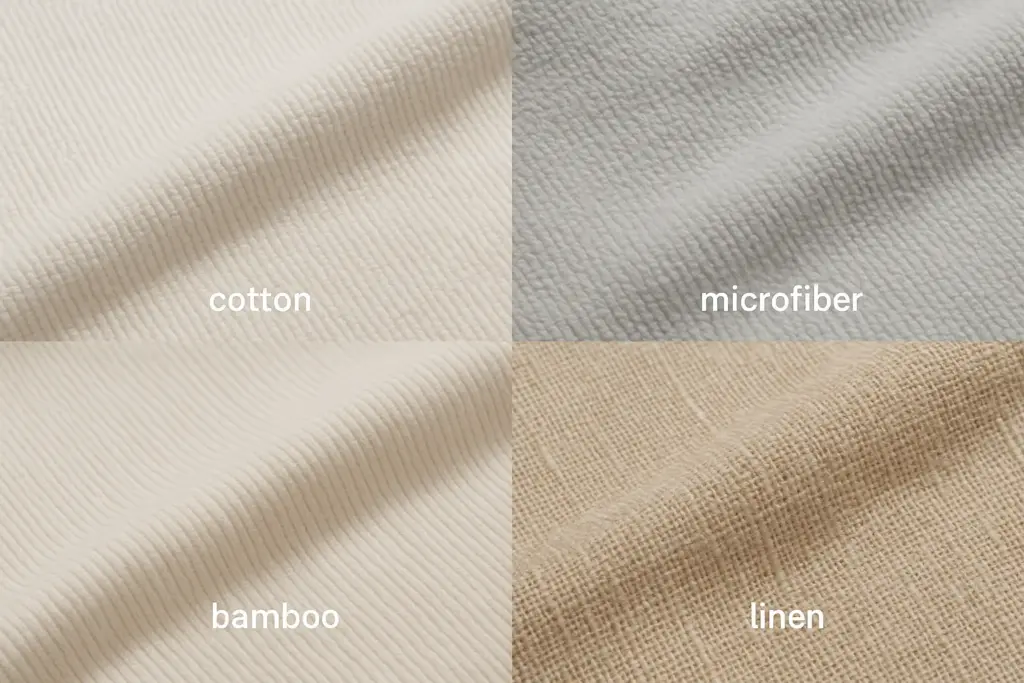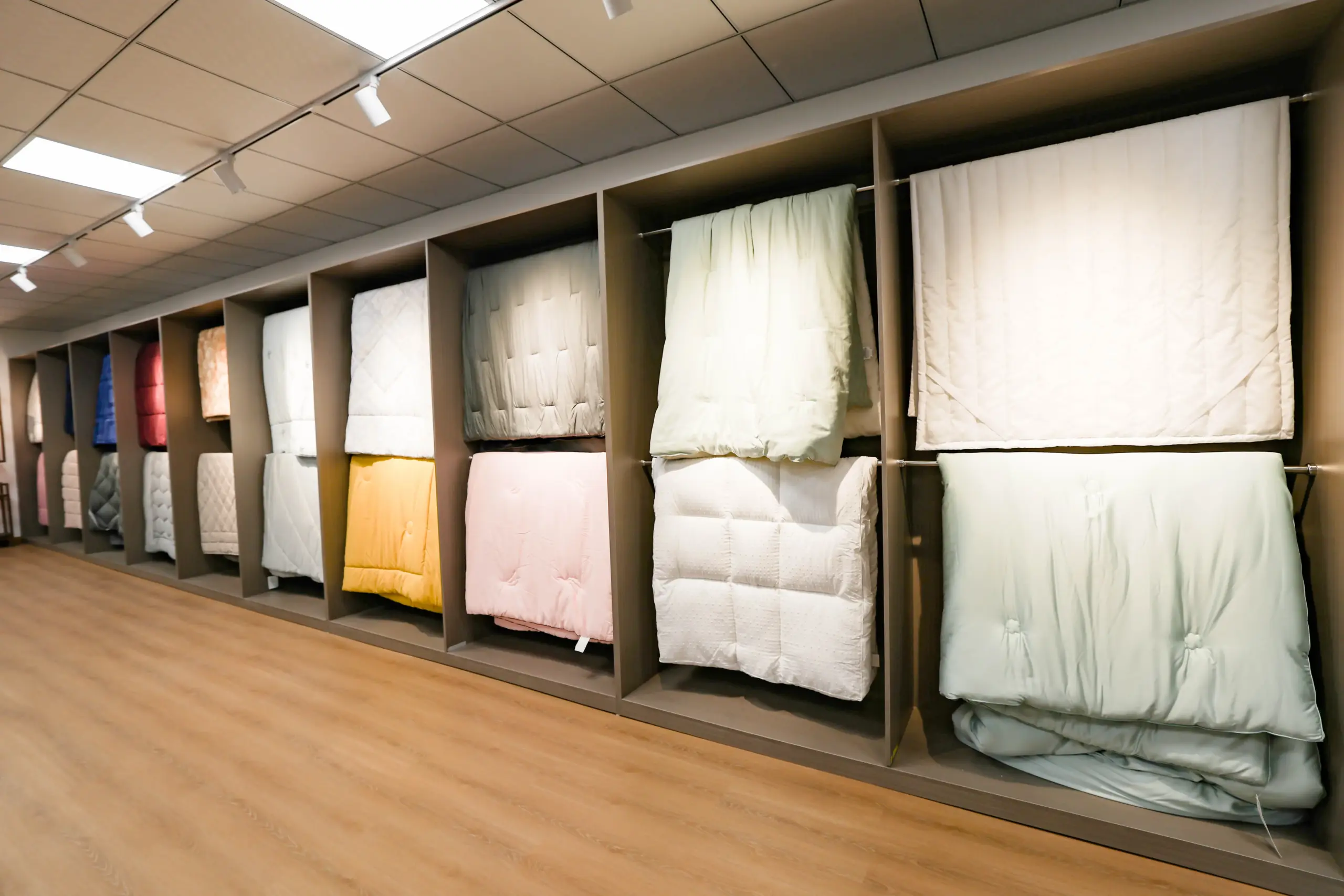When choosing a comforter, most people focus on thickness, weight, or filling — but the outer fabric is just as important. The fabric of a comforter impacts how it feels against your skin, how breathable it is, how easy it is to maintain, and even how long it lasts. Whether you’re buying for personal use, a hospitality business, or for resale, understanding the best comforter fabrics will help you make a smarter investment in sleep comfort.
In this blog, we’ll break down the most popular comforter fabrics, their pros and cons, and which type is best for different sleeping needs.
1. Cotton: The Timeless Favorite
Cotton is one of the most commonly used materials in home textiles, and for good reason. This natural fabric is soft, breathable, and hypoallergenic, making it ideal for almost all types of sleepers.
Advantages:
- Natural and breathable
- Soft on the skin, suitable for sensitive users
- Easy to wash and care for
- Available in a range of weaves and thread counts
Best for: All seasons, sensitive skin, and a classic feel.
If you’re looking for a natural, versatile option, cotton is a safe and reliable choice. Premium options like Egyptian or organic cotton offer even greater softness and breathability.
2. Microfiber: Smooth, Durable & Budget-Friendly
Microfiber is a synthetic material made from finely woven polyester. Despite being man-made, it delivers a smooth, soft feel that mimics high-thread-count cotton — but at a lower price point.
Advantages:
- Lightweight and wrinkle-resistant
- Excellent for trapping warmth
- Durable and easy to wash
- Hypoallergenic and resistant to dust mites
Best for: Budget-conscious buyers, colder climates, and low-maintenance bedding.
At Yintex, we manufacture high-quality microfiber comforters that combine luxury with practicality. Our microfiber fabric is carefully engineered to provide lasting comfort and durability.
3. Bamboo: Sustainable Softness
Bamboo-derived rayon or viscose fabric has become a popular choice for eco-conscious bedding. It’s prized for its cooling properties and silky texture.
Advantages:
- Naturally antibacterial and hypoallergenic
- Highly breathable and moisture-wicking
- Eco-friendly production
- Soft and gentle to the touch
Best for: Hot sleepers, allergy-prone individuals, and eco-friendly consumers.
Bamboo fabric also helps regulate body temperature, making it ideal for year-round use in various climates.
4. Linen: Airy & Long-Lasting
Linen is a breathable, moisture-wicking fabric made from the flax plant. Known for its cool touch and crisp texture, linen comforters are perfect for hot climates or summer months.
Advantages:
- Exceptional breathability
- Durable and grows softer over time
- Naturally resistant to bacteria and dust mites
- Eco-friendly and biodegradable
Best for: Warm climates, summer use, and those who prefer a natural, slightly textured feel.
While linen tends to wrinkle more than other fabrics, its durability and luxurious look make it a favorite in upscale bedding.

5. Tencel™ Lyocell: The Eco-Luxury Fabric
Tencel™, also known as Lyocell, is a sustainable fabric made from wood pulp. It’s processed using an eco-friendly method and delivers a silky-smooth texture that’s perfect for sensitive skin.
Advantages:
- Cool and breathable
- Silky smooth and naturally soft
- Resistant to wrinkles and static
- Sustainable and compostable
Best for: Luxury bedding seekers, hot sleepers, and green-conscious consumers.
Lyocell comforters are an excellent combination of performance and sustainability, offering a premium sleep experience with less environmental impact.
Key Factors to Consider When Choosing Comforter Fabric
- Climate: Hot sleepers or summer use call for breathable fabrics like bamboo, linen, or Tencel. Cooler climates may benefit from microfiber or cotton.
- Skin Sensitivity: Natural and hypoallergenic fabrics such as cotton, bamboo, and Tencel are great for sensitive skin.
- Maintenance: Synthetic fabrics like microfiber are easier to clean and maintain, while natural fibers may require more care.
- Budget: Microfiber and cotton offer great value, while Tencel and linen may cost more but deliver added benefits.
Final Thoughts
Choosing the right fabric for your comforter can greatly improve your sleep quality and ensure long-term satisfaction. Whether you prioritize softness, breathability, sustainability, or ease of care, there’s a perfect fabric for everyone.
At Yintex, we offer a full range of premium comforters made from top-quality materials, including microfiber, cotton, bamboo, linen, and Tencel™. With our B2B-focused service, we provide tailored solutions for hotels, retailers, and custom bedding brands worldwide.
👉 Explore our Comforters Collection and choose the right fabric to elevate your sleep experience.


Leave a Reply